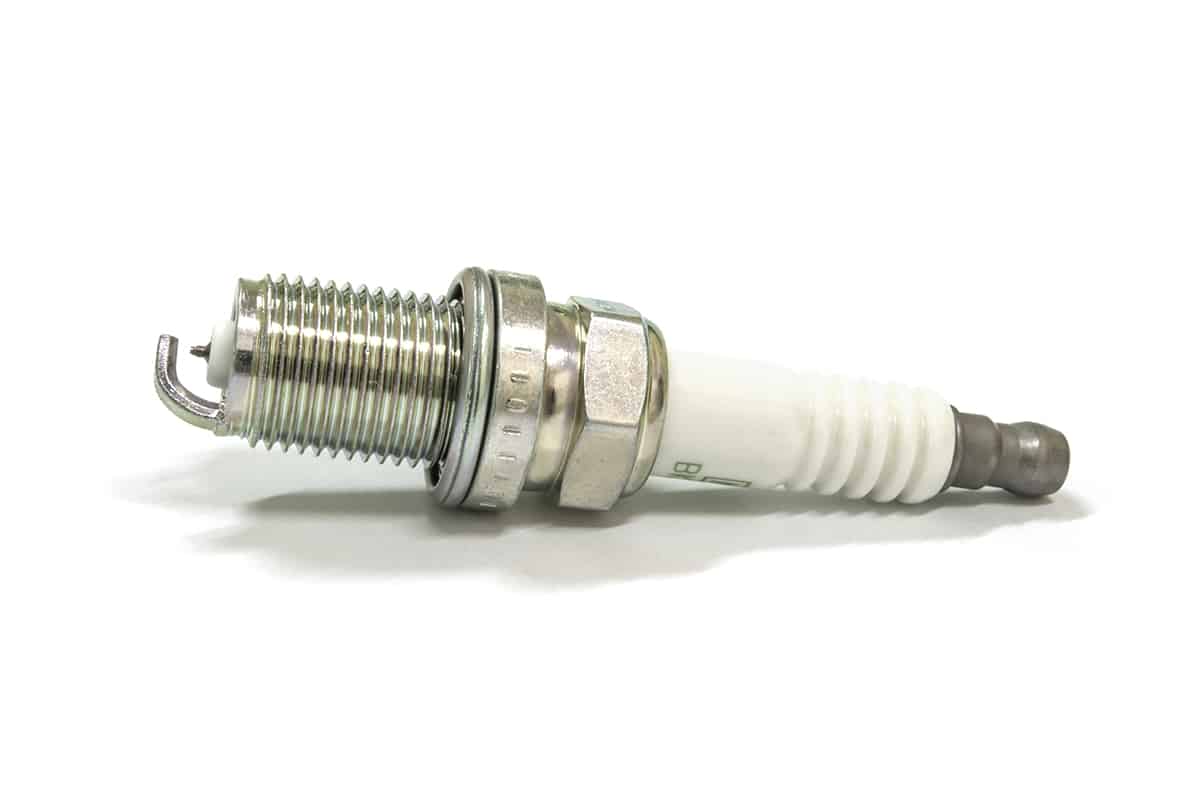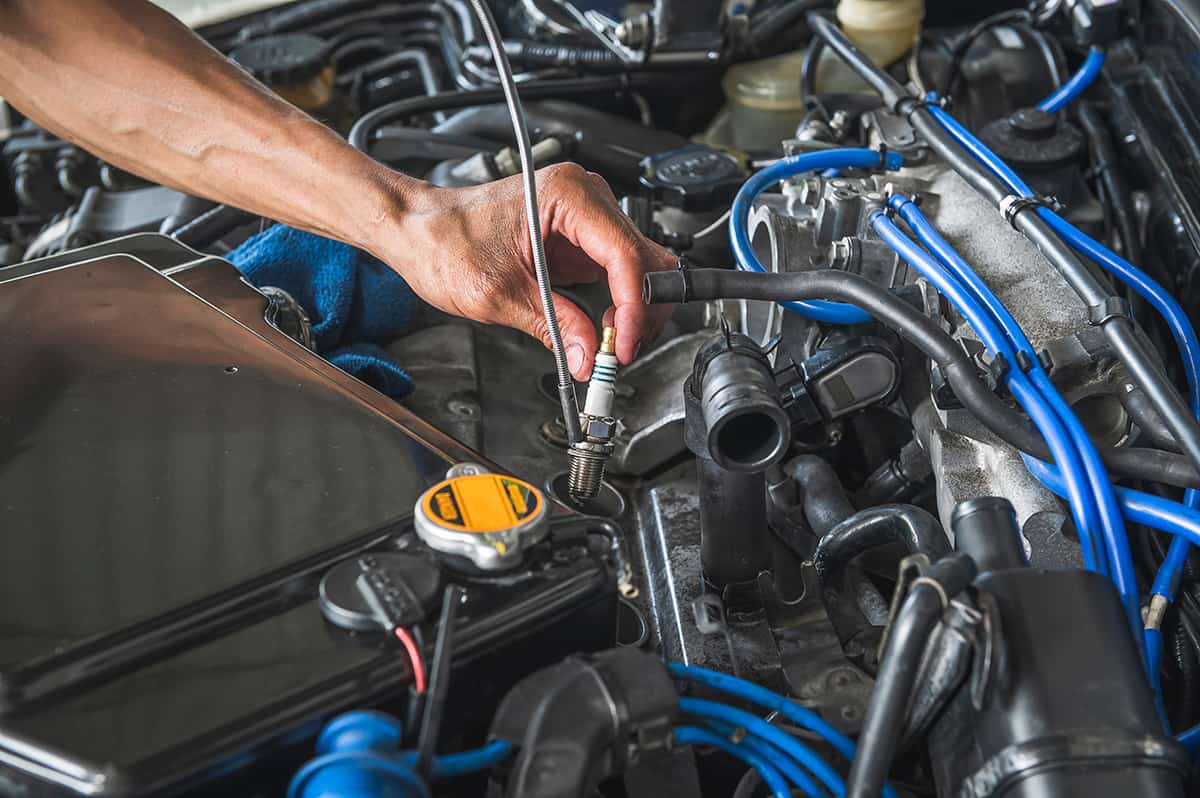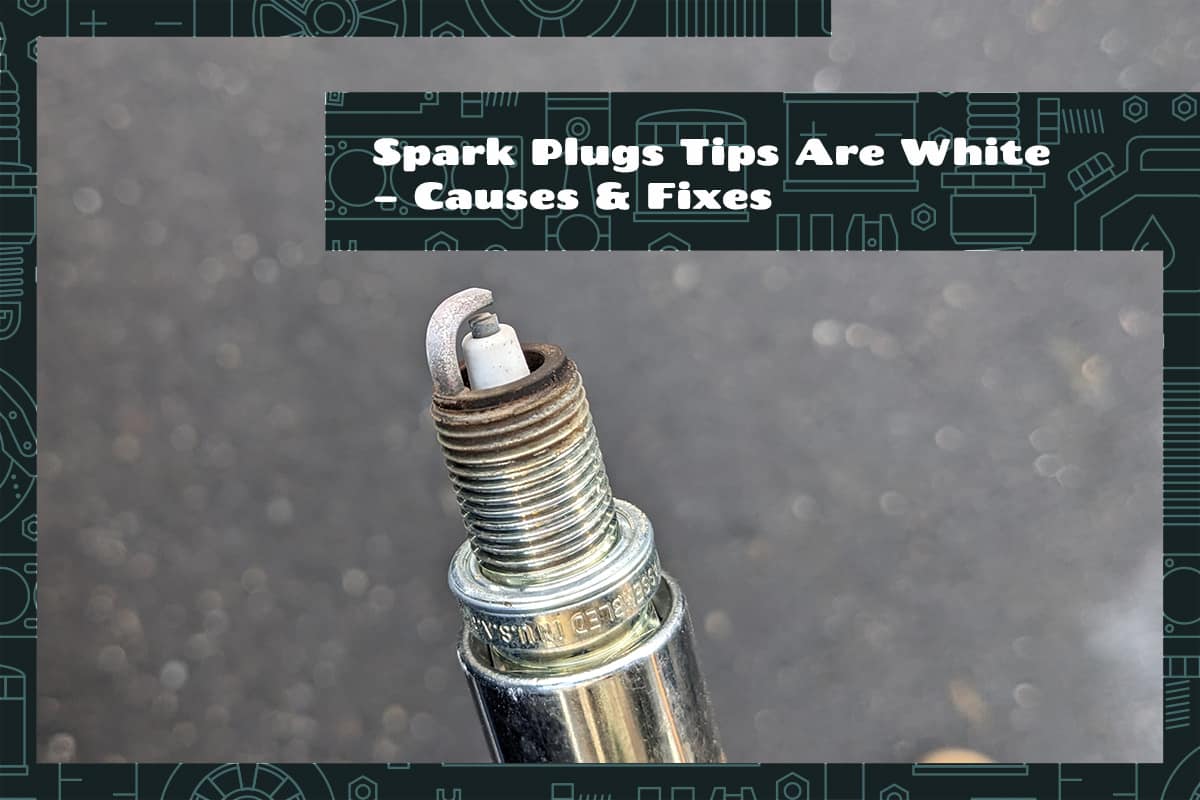Spark plugs are small but pivotal parts of your car that affect performance, fuel efficiency, and emissions. Something people may not realize is that their tips become white. This phenomenon is more than just a cosmetic issue—it can be a sign of an underlying engine problem.
White spark plug tips are commonly caused by a lean air-fuel mixture, an overheating engine, poor ignition timing, or the use of low-quality fuel. You can remedy this issue by adjusting the air-fuel mixture, managing engine temperature, correcting ignition timing, or improving fuel quality.
This article will delve deeper into the causes of white spark plug tips and provide comprehensive and easy-to-understand solutions. We’ll cover the basics of spark plugs and fixing white spark plugs.
Basics of Spark Plugs

A spark plug is a tiny device that plays a big role in your car’s performance. Located in the cylinder head of an engine, it creates a spark that ignites the compressed air-fuel mixture in the combustion chamber. This explosion forces the piston down, creating power that propels your car. It comprises several parts, including the terminal, insulator, center electrode, ground electrode, and shell. The electrode is the region where the spark jumps from the center electrode to the ground, igniting the air-fuel mixture.
There are four main types of spark plugs: Copper, Iridium, Platinum, and Double Platinum.
- Copper Spark Plugs: The most common and the least expensive, Copper spark plugs are ideal for older vehicle models that do not require high-energy ignition systems. They are durable and provide excellent heat dissipation but require more frequent replacement.
- Iridium Spark Plugs: Iridium plugs are six times harder and eight times stronger than platinum. They have a small center electrode that reduces the voltage needed to create a spark, resulting in improved fuel efficiency and acceleration.
- Platinum Spark Plugs: These spark plugs have a center electrode made of platinum, which is harder than nickel alloy and resists wear and erosion better. This results in a longer lifespan than copper plugs.
- Double Platinum Spark Plugs: These spark plugs are essentially the same as platinum spark plugs, but with platinum on both the center and ground electrodes. They are ideal for waste spark ignition systems.
What Does It Mean When Spark Plugs Are White?
When spark plugs have white deposits on their tips, it often points to an issue with the combustion process in the engine. After being used for some time, a healthy spark plug should exhibit a light brown or grayish-tan coloration. However, white deposits on the tips suggest that the combustion process is running hotter than normal.
Early signs of white spark plugs are as follows:
- Reduced Engine Performance: The vehicle may lack power during acceleration, have reduced fuel efficiency, or display inconsistent idling.
- Engine Misfire: This is characterized by intermittent popping or spitting sounds from the engine.
- Difficulty Starting the Engine: An overly lean air-fuel mixture can cause difficulties during ignition.
- Excessive Exhaust Emissions: Too much air in the combustion process can lead to increased nitrogen-oxide emissions.
While these symptoms may not 100% indicate white spark plug tips, your spark plugs should be one of the first things to examine if any of these signs appear in your car.
Common Causes of White Spark Plugs
White deposits on spark plugs indicate faults in the engine’s combustion process. Here, we’ll examine the likeliest causes in more detail.
1. Lean Air-Fuel Mixture
This occurs when the air-to-fuel ratio in the combustion chamber is higher than ideal, resulting in too much oxygen. The surplus oxygen causes the fuel to burn hotter, leading to overheating of the spark plug and subsequent white deposits.
2. Overheating Engine
When the engine overheats, it can cause the spark plugs to run hotter than they’re supposed to, forming white deposits. This could be due to problems with the cooling system, such as a leaky radiator, malfunctioning water pump, or a clogged cooling channel.
3. Insufficient Ignition Timing Advance
Ignition timing refers to when the spark plug fires concerning the piston’s position. If the spark occurs too late—known as retarded ignition timing—it can cause the air-fuel mixture to burn hotter than normal, which can lead to white spark plugs.
4. Poor Quality Fuel
Low-quality fuel often contains higher levels of impurities that don’t burn off during the combustion process. These impurities can deposit on the spark plug, leading to a white, crusty residue. Also, low-quality fuel may not provide an optimal air-fuel mixture, contributing to the lean condition that leads to white spark plugs.
5. Using the Wrong Spark Plugs
Every engine requires a specific type of spark plug designed to handle its unique combustion conditions. If a spark plug is not designed to handle the heat range of your specific engine, it can overheat, leading to the formation of white deposits.
Fixes for White Spark Plugs

If your spark plugs have white deposits, there are several steps you can take to fix the issue. That said, the most appropriate course of action will depend on the underlying cause.
1. Adjust the Air-Fuel Mixture
If a lean air-fuel mixture is causing your spark plugs to turn white, adjusting the mixture can resolve the issue. This could involve repairing vacuum leaks, replacing faulty fuel injectors, or adjusting the fuel pressure. In some cases, you may need to replace the oxygen sensors if they’re sending incorrect readings to the engine control unit (ECU).
2. Repair the Cooling System
Fixing any issues with your cooling system can rectify the problem. This may involve repairing or replacing a leaky radiator, fixing a malfunctioning water pump, or unclogging the cooling channels. Checking your coolant levels regularly and ensuring your cooling system is well-maintained can help prevent engine overheating.
3. Adjust the Ignition Timing
If retarded ignition timing is causing your spark plugs to overheat and turn white, adjusting the timing can be an effective solution. This could involve replacing a worn timing belt, fixing a faulty ignition control module, or replacing a malfunctioning crankshaft position sensor.
4. Use High-Quality Fuel
If you’re using low-quality fuel, switching to a higher-quality option can help clear up the white deposits on your spark plugs. High-quality fuel contains fewer impurities that can deposit on the spark plugs, providing an optimal air-fuel mixture for your engine.
5. Install the Correct Spark Plugs
If you’ve installed the wrong spark plugs for your engine, the simplest fix is to replace them with the correct ones. Refer to your vehicle’s owner manual or consult with a professional mechanic to determine the appropriate spark plugs for your specific engine.
FAQs
1. How often should I check my spark plugs?
On average, conventional spark plugs should be checked every 30,000 miles, while platinum or iridium spark plugs can last up to 100,000 miles before they need checking or replacing. However, if you notice symptoms like poor fuel economy, difficulty starting the engine, or erratic idling, you should check your spark plugs sooner.
2. Is it expensive to fix white spark plugs?
The cost of fixing white spark plugs can vary greatly and depends on the underlying cause of the problem. For instance, replacing spark plugs is relatively inexpensive, typically ranging from $40 to $150, depending on the make and model of your car.
If the issue is caused by something more serious like a malfunctioning cooling system or fuel injector issues, repair costs can increase significantly, potentially costing several hundred dollars.






